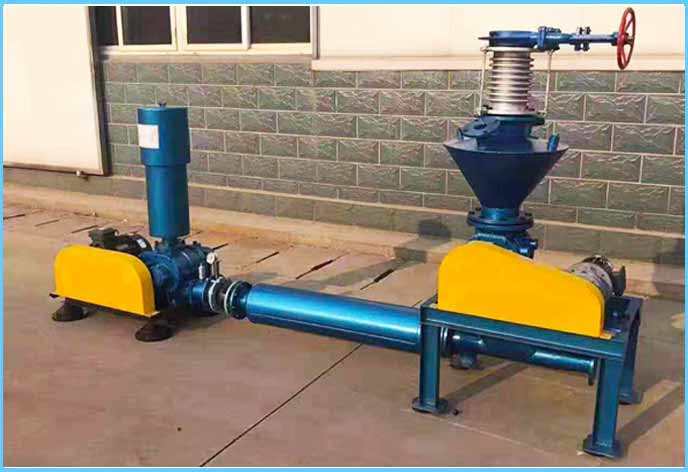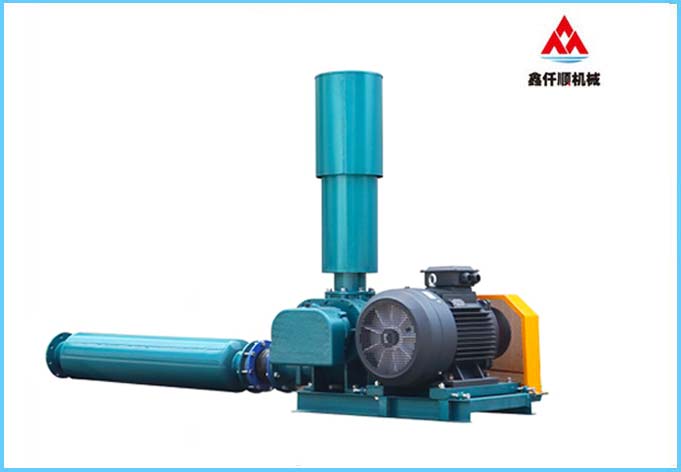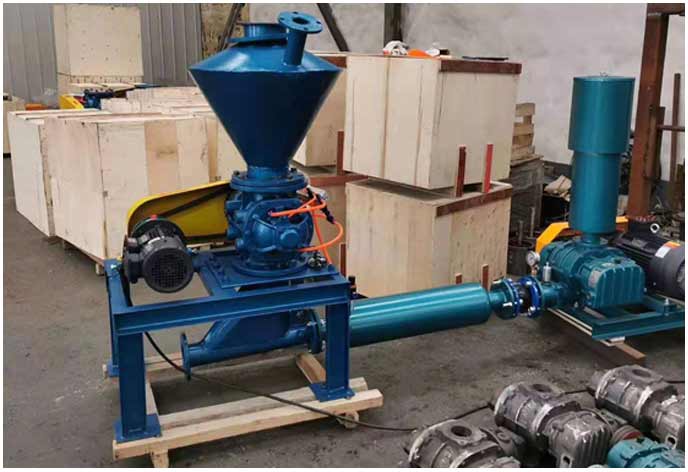Roots blower is a volumetric rotary fan, whose air volume is proportional to the number of revolutions. It is a rotary compressor that uses two blade rotors to make relative movement in the cylinder to compress and transport gas. There is always a small gap between the end face of the impeller and the front and rear end covers of the fan, as well as between the impeller of the fan. Driven by the synchronous gear, the air is transported from the air inlet of the fan to the exhaust side along the inner wall of the housing. The fan cavity does not need lubricating oil, has simple structure, convenient manufacturing, stable operation, stable performance, and is suitable for many purposes, and has been used in a wide range of fields. It is widely used in sewage treatment, flue dust desulfurization, material transportation, gas and flammable and explosive gas transportation, heavy oil injection, blast furnace smelting, aquaculture, pesticide chemicals, formaldehyde synthesis and other fields.
When wiring Roots blower, we should install it according to the standard working voltage. For example, our Roots blower is 380V, so we cannot connect it to 220V. When wiring again, we should pay attention to some other problems, such as the positive and negative poles of the wire should not be reversed. Secondly, we should check the correctness of the rotation of the Roots blower during the trial run. We should check these during the trial run. If there are technical problems, there will certainly be large areas of problems in the later use.
Generally speaking, Roots blower is installed on the ground or on the foundation. Some small models of Roots blowers do not need to be installed because they do not vibrate violently. Generally speaking, large models of Roots blowers have basic setting standards. We should install the blowers according to the design standards. If our fan is installed outdoors, we suggest that the Roots fan should be covered to avoid the erosion of the external environment. If we are installed indoors, we should check the Roots fan regularly.
If we have two factories, one is at a higher altitude and the other is at a lower altitude, there is a certain difference between the two when selecting models. The two cannot be used interchangeably because the atmospheric pressure in high altitude areas is different from that in low altitude areas. If they are used interchangeably, certain pressure and flow problems may occur.
1. Cracks and fractures of components
Cracks or fractures often occur in equipment parts due to casting, processing defects or internal stress, overload operation and other reasons. The conventional repair method is welding, but welding often leads to thermal deformation or thermal stress of parts, especially thin-walled parts. Moreover, some parts are made of cast iron, aluminum alloy, titanium alloy and other difficult welding materials, and some occasions prone to explosion hazards, such as petrochemical industry, are not easy to use welding repair methods, It severely limits the level of equipment repair and maintenance of enterprises, and increases the operating costs of enterprises.
2. Worn transmission parts
The wear of transmission parts accounts for more than 70% of equipment failures. Most of the equipment parts are made of metal. Due to their high strength and hardness, some of the parts are impacted and deformed into permanent deformation under the action of vibration, shock and other combined forces during production and operation, and the recovery stress drops, forming gaps, which can not meet the operation requirements, resulting in wear of transmission parts.
The traditional repair methods include surfacing, thermal spraying, electric brushing, etc. Those metal parts that are particularly sensitive to temperature will make the surface of the parts reach very high temperature, causing deformation or cracks of the parts, affecting the dimensional accuracy and normal use of the parts, and even causing shaft fracture in serious cases. Although there is no thermal effect on the brush carrier, the thickness of the carrier layer should not be too thick, causing serious pollution, and its application has also been greatly limited.
3. Corrosion erosion
The corrosion we usually talk about is the damage and deterioration of equipment caused by the action of environmental media. Corrosion will not only cause economic losses to enterprises, but also harm safety and the environment, and increase the loss of natural resources. For the problem of equipment corrosion, frequent replacement of equipment parts is a common method adopted by enterprises at present, and the equipment is generally of high value due to the influence of materials and processing technology.
I believe that after reading the above contents, you should also understand the solutions to common faults of Roots blower. I hope it will be helpful to you.
Text label: Roots blower
Link to this article: //wuhanzhcs.com/html/news/n02/644.html










